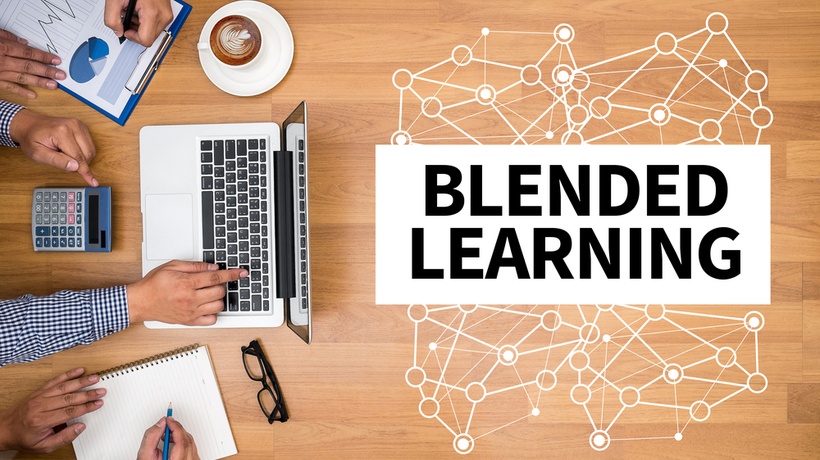Methods To Implement Blended Learning In 2021
The pandemic has affected the workplace in more ways than one, and that includes training. As a result of this pandemic, organizations around the globe are redesigning, and blended/hybrid learning is becoming the new normal. It is time for us to think of a more thoughtful approach to implementing impactful blended learning. Organizations worldwide are gravitating toward the new normal precisely because it works and also because it is important for them in the face of future disruptions.
As businesses deal with the transition, there is a clear shift from the structured and well-planned corporate learning to the more agile operational learning. Blended learning is the preferred choice for corporates not only because it is cost-effective, but also because it is a more natural way to learn and work at the same time. Combining conventional training with online training helps the organization have full control of how, when, and where the employees choose to learn.
We will have a closer look at what is blended learning, the benefits, the various blended learning models, and how to utilize them in 2021.
How Will Blended Learning Work In The New Normal?
Blended learning has been around for a while now. It offers the best of face-to-face/instructor-led training and eLearning/digital training [1]. Not only can you benefit from the implementation of synchronous learning, but you also have the opportunity to benefit from “going at your own pace” techniques that are a part of asynchronous learning.
Blended learning can be used as a viable solution also as part of the continuous learning journey experience for the learner. A continuous learning journey means that the learner accesses content not just during the formal virtual training sessions or an online learning experience, but also during the lull periods, or what we call the "forgetting period." What we mean here is that learners tend to forget the content they learned a few days after a class. To reap the full benefits of implementing a blended program, organizations can give learners other short nuggets using learning strategies such as microlearning to help them recall the learning and apply it better on the job.
To elaborate further, learners can play mini-games or take up some microlearning courses after attending a blended learning program. They can also download a PDF of the best practices covered in training. This is to ensure that the blended learning experience is complete and helps learners pace their learning better.
Methods To Create A Blended Training Program
There are various ways to create blended programs. Some are enumerated below:
- A program that starts with pre-training reading material that learners can go through, followed by a virtual training, and then a follow-up eLearning session.
- A program that starts with an eLearning program as an introduction awareness session, followed by a detailed hands-on workshop style training program, followed by refresher nuggets using microlearning.
- A virtual session followed by a series of microlearning [2] nuggets or mini-games that will reinforce the key concepts learned in the virtual session.
As virtual training sessions will be the norm, you must use the best tools available to conduct the sessions. Here are some of the tool options available:
- Zoom
- Cisco Webex
- GoToWebinar
- Adobe Connect
- Google Hangout
- AnyMeeting
Thus, blended learning represents a model that integrates technology to boost learning and deliver business impact.
Benefits Of Blended Learning
Learners across the organization can benefit from using a blended learning strategy. This is because a combination of learning approaches used in the blended program can stimulate their interest and increase their participation, thus increasing their efficiency.
Anyone would want to adopt a learning strategy that comes with great benefits! Let’s go through the top blended learning benefits for corporate training.
- Increased retention of concepts learned
- Better engagement, as there are multiple modalities of training
- Better application of the learning, leading to increased productivity
- Increased benefits to the organization due to increased engagement, participation levels, and performance improvement
- Use of games and microlearning within the blend can take the learning and retention to the next level
Conclusion
To conclude, blended learning has several benefits and will be adopted in a big way during 2021. It is going to be interesting to watch how organizations use blended learning in a plethora of learner-centric offerings.
At Tesseract Learning, our learning and visual architects are constantly innovating and reinventing their approaches to design, develop, and deliver better learning experiences. I hope you found this article insightful and that it helps you in driving employee engagement and performance. If you have any questions you can contact me or leave a comment below.
References:
[1] Custom ELearning Solutions
[2] Microlearning








